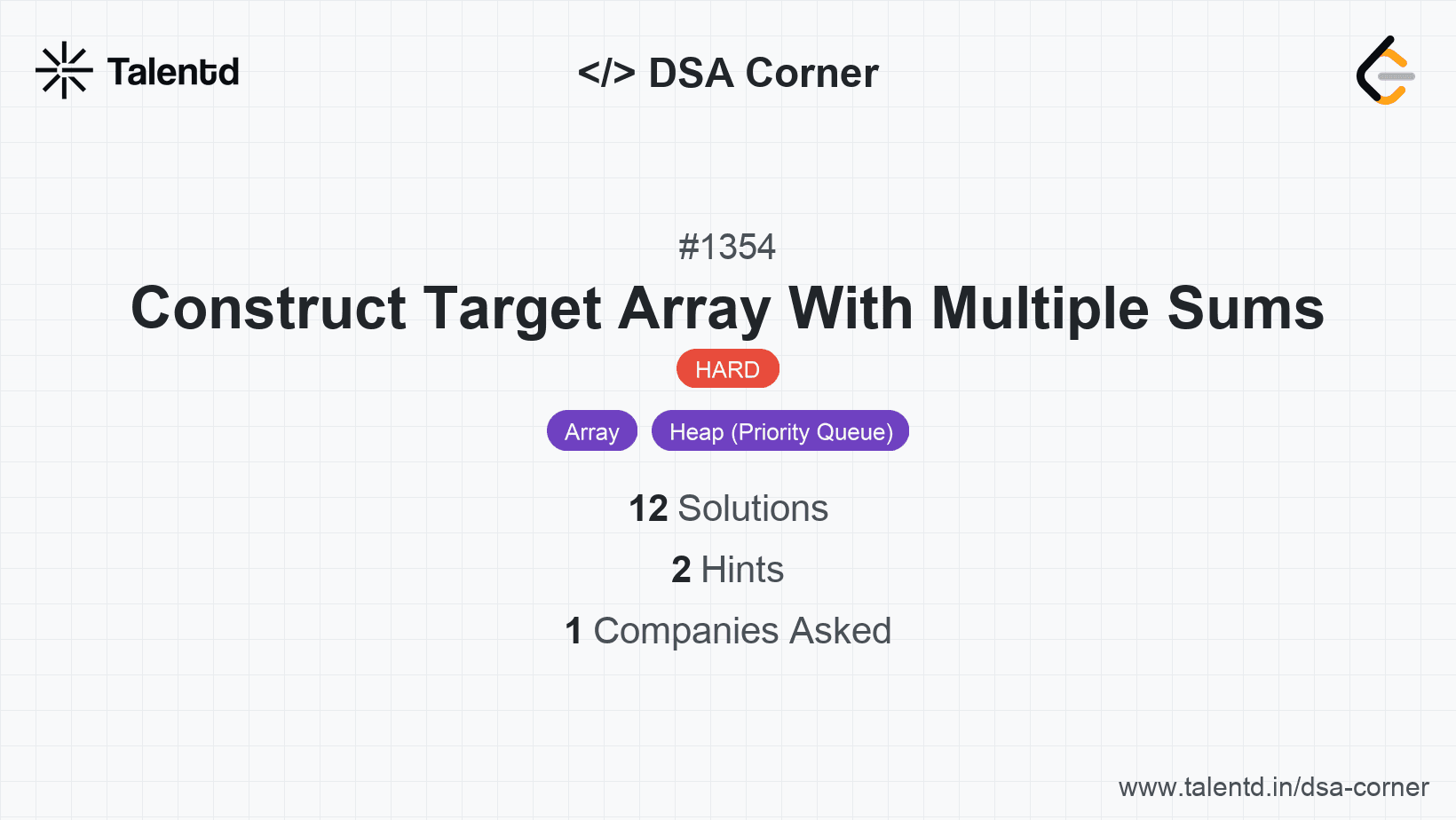
Sponsored
Sponsored
This approach uses a max-heap (priority queue) to efficiently track and operate on the largest element. The primary idea is to reverse the operation: starting from the target array, every large element in the target can be seen as the result of adding all smaller elements in the array to one of the array's elements during the last operation. By repeatedly transforming the largest element in this manner, we can verify if it is possible to reach the initial array of ones.
The time complexity is O(n log n * log maxValue) due to sorting and heap operations, where n is the number of elements and maxValue is the maximum integer in the target. The space complexity is O(1) since we are sorting and using in-place operations optimistically.
1using System;
2using System.Collections.Generic;
3
4class Solution {
5 public bool IsPossible(int[] target) {
6 long total = 0;
7 PriorityQueue<int, int> pq = new PriorityQueue<int, int>();
8 foreach (int num in target) {
9 total += num;
10 pq.Enqueue(num, -num);
11 }
12
while (pq.Peek() != 1) {
int largest = pq.Dequeue();
total -= largest;
if (total <= 1 || largest <= total || largest % total == 0) return false;
largest %= total;
total += largest;
pq.Enqueue(largest, -largest);
}
return true;
}
static void Main() {
var sol = new Solution();
Console.WriteLine(sol.IsPossible(new int[] {9, 3, 5}));
}
}This C# solution leverages the PriorityQueue found in recent .NET versions, which is similar to Java's and C++'s priority queue implementations. The logic reduces the problem to managing the largest element efficiently through the reverse process.
This approach utilizes a sort and modulo method to reverse-track the process involved in constructing the target array from an array containing ones. It revolves around repeatedly reducing the maximum value to the remainder after division with the sum of other elements.
Steps include:
Time complexity is O(n log n * log maxValue); space complexity is O(1) when using in-place operations for sorting and arithmetic.
1#include <iostream>
2#include <vector>
3#include <algorithm>
4
5bool isPossible(std::vector<int>& target) {
6 long sum = 0;
7 for (int num : target) sum += num;
8 std::sort(target.begin(), target.end(), std::greater<int>());
9
10 while (target[0] != 1) {
11 long largest = target[0], rest = sum - largest;
12 if (rest == 0 || largest <= rest) return false;
13 int new_value = largest % rest;
14 if (new_value == 0) return false;
15 target[0] = new_value;
16 sum = sum - largest + new_value;
17 std::sort(target.begin(), target.end(), std::greater<int>());
18 }
19 return true;
20}
21
22int main() {
23 std::vector<int> target = {8, 5};
24 std::cout << (isPossible(target) ? "true" : "false") << std::endl;
25 return 0;
26}Like in C, this C++ solution leverages sorting to manage and operate on the largest element of the array. It ensures that the array is transformed in each step by modifying the largest element into that of its remainder post modulo with the base structure.